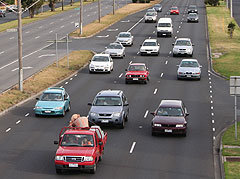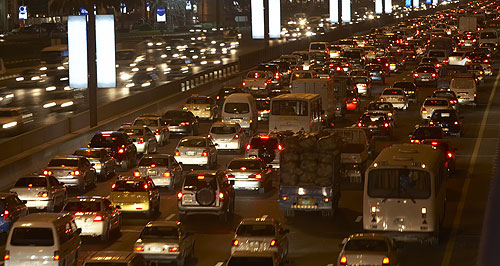News - General NewsCar FBT 20 per cent flat rate ‘a tax grab’Tax adjustment: Fringe benefits taxes on company cars will be calculated on a flat-rate basis after changes were announced in last night's federal budget. New flat-rate fringe benefit tax rules for cars to be phased in over four years11 May 2011 A NEW flat-rate system for calculating car fringe benefits tax, which was announced last night in the federal budget, will be phased in over four years to gradually standardise the current statutory kilometre-based formula to a flat 20 per cent in a move that will cost industry an extra $953 million. Motor industry and fleet association leaders have described the 20 per cent rate as a tax grab, saying the government should have adopted a lower percentage to make the move revenue neutral. The Federal Chamber of Automotive Industries (FCAI) says the government should either cut the tax rate to reduce the FBT windfall or offset it with some other tax reform, such as abolishing the luxury car tax, to reduce the burden on industry and motorists. However, the FCAI and the Australasian Fleet Managers Association (AFMA) have both welcomed the flat rate system in principle, saying it is consistent with lowering greenhouse emissions by encouraging drivers to curb their kilometres. Announcing the revised system, federal treasurer Wayne Swan said it would remove the unintended incentive for people to drive their vehicle further than they need to, in order to obtain a larger tax concession.  “Phasing out the current car fringe benefit treatment is a sensible reform from both a taxation and an environmental perspective,” he said. While company car drivers who cover up to 15,000km a year will be better off under the new system, those who drive 25,000km or more will be slugged harder than previously, carrying the extra burden of the higher percentage. The new system will apply to new contracts signed after 7.30pm on May 10 – Budget night – and does not apply to existing contracts. Fleet drivers will also be able to retain the log-book method of calculating FBT, which some people feared might be given the chop in the budget. Under the new statutory system – where the rate is multiplied by the cost of the car to determine a person’s car fringe benefit – drivers on new contracts who drive up to 25,000km will be immediately standardised on 20 per cent. Drivers covering between 25,000km and 40,000km will move up from 11 per cent to 14 per cent immediately, and then to 17 per cent at the start of the new FBT year on April 1, 2012, before reaching 20 per cent on April 1, 2013. Long-distance drivers covering more than 40,000km will move up from seven per cent to 10 per cent immediately if they start a new contract, before sliding up each year to 13 per cent, 17 per cent and finally 20 per cent on April 1, 2014. FCAI chief executive Andrew McKellar said his organisation – the peak body for motor vehicle manufacturers and importers – acknowledged that the previous approach to FBT, using a kilometre-based threshold, was out of date and inconsistent with the goal of reducing carbon emissions for motor vehicles. “Broadly speaking, industry would expect this reform to be implemented on a revenue neutral basis," he said. "Accordingly, we will be looking to make an assessment about whether the proposed new FBT rate should be lower. “Industry will be concerned to ensure that those people who legitimately need to use their vehicle for business purposes are not faced with an unnecessary tax hike as a consequence of this measure. “Just because you live a bit further from the city, or in a country town and need to cover longer distances, doesn’t mean you should pay more tax on the car you drive. “Industry also remains firmly of the view that the Government should not lose sight of the need to reform other aspects of motor vehicle taxation, including the luxury car tax. "The luxury car tax is a punitive tax on advanced safety and environmental technologies and should be abolished or substantially re-worked."AFMA executive director Marja Thompson said that while the previous system needed reform to encourage greener driving, the 20 per cent statutory rate was too high, and as evidenced by the extra $953 million the government was to earn, clearly a tax grab.  Read more |
Click to shareGeneral News articlesResearch General News Motor industry news |















Facebook Twitter Instagram